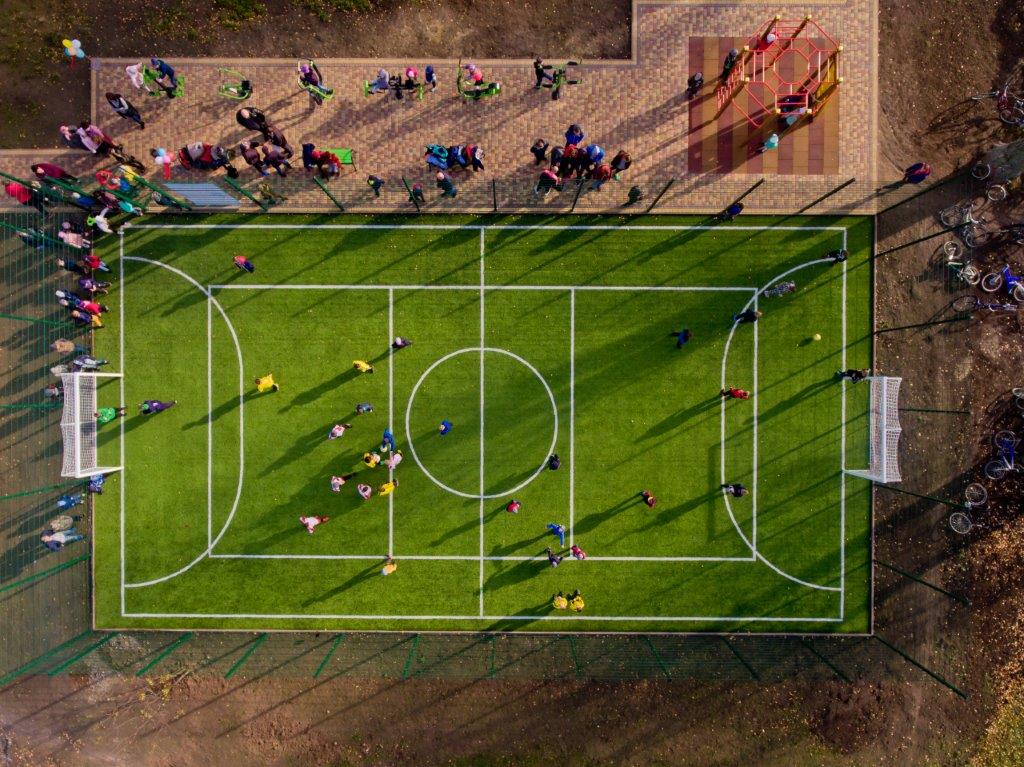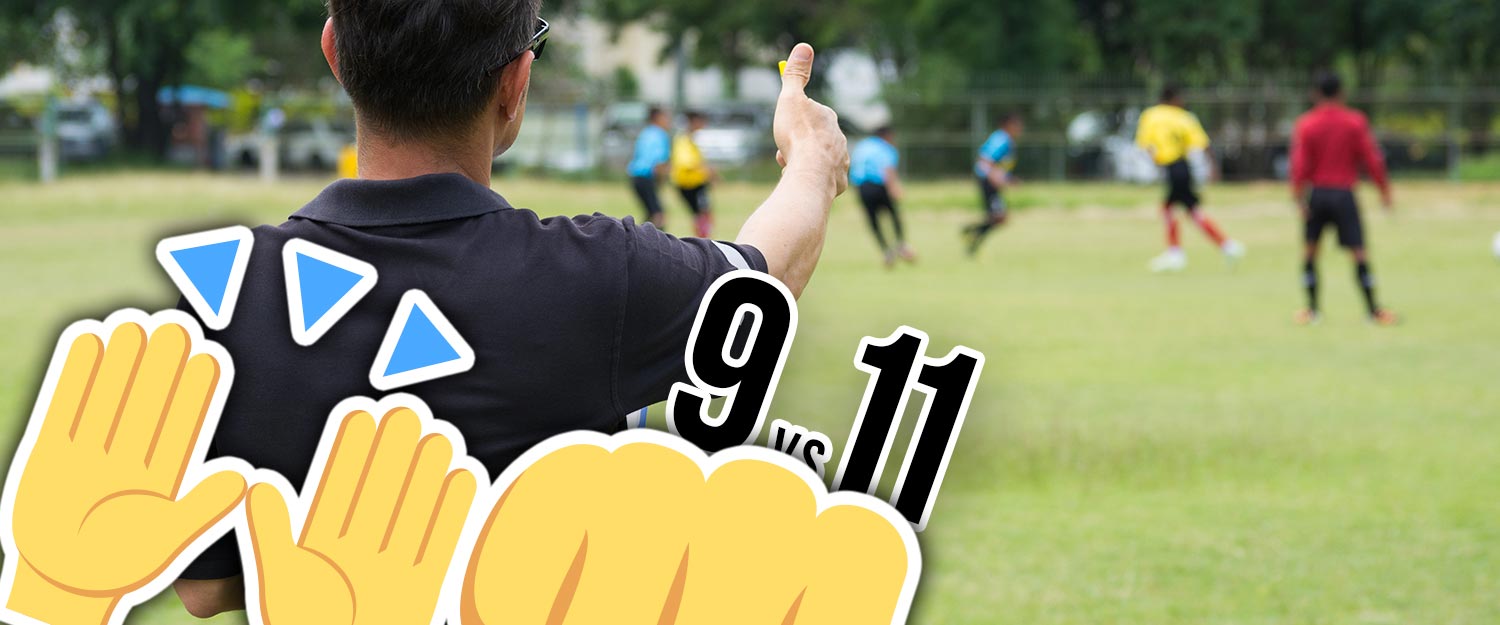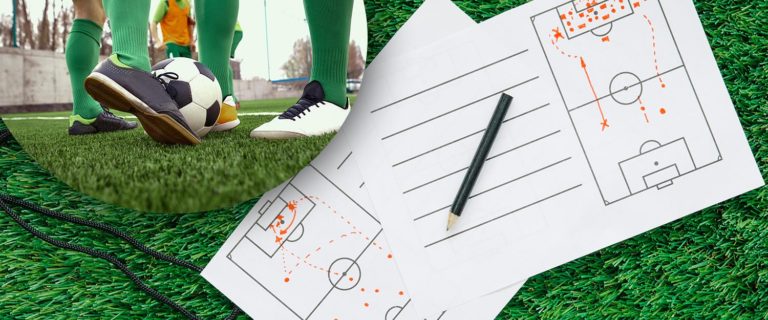Is 9-A-Side Easier Than 11-A-Side Football? – Complete Guide
Among the many other versions of the game, 9-A-Side is a very important version. There should be an understanding of this fact that the shorter versions of the game hold a very significant place in the footballing world as they play two major roles. One is that the shorter versions like 9-A-Side are used in the football academies to nourish and prepare the young players for the competitive version or 11-A-Side. If you’re very fond of football and you want to learn to get the understanding of the game, you should go for these versions.
[powerkit_toc title=”Table of Contents” depth=”1″ min_count=”4″ min_characters=”1000″]
It won’t be wrong if we say, 9-A-Side is the foundation of competitive football. That’s why the question arises, is the 9-A-Side easier than 11-A-Side football? We say yes, it is easier than the 11-A-Side.
Let us justify our answer. Hop in!
FACTS AND RULES
Don’t worry, we will get through the stats and numbers very quickly. But it’s necessary to let you know about the basic and key differences between both versions. Here we go:
- In 9-A-Side football, there are unlimited substitutions allowed, while in the standard 11-A-Side football, there are only 3 substitutions allowed in ordinary circumstances. It’s important to add that, due to COVID-19 emergence, there are now 5 substitutions allowed in each game.
- As you know already, there are up to 16 players allowed in the match squad in 11-A-Side football, in this aspect, the 9-A-Side is very lenient. As there are unlimited substitutions allowed, that’s why there’s no definite match squad number in this version.
- However, it’s a rule that a minimum of 7 players must be present on the field to continue the game from each side.
- The match duration is 45 minutes each half, in 11-A-Side. On the other hand, the match duration in 9-A-Side is 30 minutes each half.

IS 9-A-SIDE LESS POPULAR?
In the case of 9-A-Side football, the answer to the question is quite fascinating. It may look like 9-A-Side football is less popular than the standard version of the game but that is not the case at all. The awareness of the game is rising every day. It’s a truth that the standard football gets all the media coverage and all the other versions are left alone for empty seats. But if we move towards the cultural point of view, the 9-A-Side is extremely famous in different local cultures and countries, also in street football.
But still, due to the media and press coverages, we have to say that yes, 9-A-Side is less popular yet. This might not be the case in the future. Let’s move on so we can state the proper answer to the question in the title. We will take a look at a few facts and factors now.
WHAT’S MORE FUN?
At the end of the day, the main purpose of these shorter versions like 9-A-Side is to provide kids a learning platform so we can nourish the future stars properly. So, it’s pretty obvious that it is designed for kids and teenagers. However, just like how adults enjoy 5 a-sides, 7 a-sides & Futsal, it is really for everyone. And what do they do? They have fun; a lot of it.
There are reasons for this too, at 9-A-Side level, there isn’t any daunting pressure on the players, there’s no press pressure, there are no expectations from the fanbases, etc. All of these factors make the 9-A-Side more relaxing and fun. That’s why it’s much easier to learn and play the beautiful game in a more relaxed and entertaining environment. Isn’t it? We have made our point. Yes, 9-A-Side is more fun.

IS 9-A-SIDE FOOTBALL MORE INTENSE?
That’s another question to examine! And it’s quite interesting one because, in football, the tempo and the rhythm of the game is an important factor. The two versions in question are very closely related and a lot of things are similar between them. So, the tempo and rhythm or we say the intensity might vary from time to time under different circumstances. Of course, some differentiating factors will make 9-A-Side more intense and engaging. Shall we talk about them?
- As the match duration is 30 minutes less in 9-A-Side football, that is 1/3 less than the standard football. This factor makes 9-A-Side football more intense. That’s because there is less time to win the game and that creates a sense of urgency on both sides, which makes the game more engaging.
- Moving on to the second factor, which is the pitch size. 9-A-Side pitch size is smaller than the 11-A-Side. So, there is more crowd in less space, which tremendously increases the intensity of the game in 9-A-Side.
- The third factor is the substitutions. As there are unlimited substitutions allowed, so there are always fresh players present on the pitch. The presence of fresh players helps to improve and maintain the high and intense tempo of the game throughout the 60 minutes. On the contrary, in the standard 90-minute match, there are usually only 3 substitutions allowed. And we often see the game slowing down in the final minutes.
- Till now, all the odds are in the favour of 9-A-Side being more intense. But that’s not the case at all. There Is huge pressure of thousands of fans and media in the standard football format. And the context of competitions and clashes is also way more intense than the simpler, easier, and shorter versions like 9-A-Side. What’s our final take on this? It’s quite simple, 11-A-Side is more intense and engaging but only in the big clashes and tournaments, while in ordinary circumstances, 9-A-Side is more fun, more engaging, and more intense.
WHO PLAYS 9-A-SIDE FOOTBALL?
We have discussed many factors until now, but here’s a more important one. Where and who plays the 9-A-Side football? 9-A-Side is primarily played in the academies of football clubs. Players from the under 13 level to the under 18 levels play the same format. Because its closest to the 11-A-Side football dynamics.
Apart from the academies, the 9-A-Side is also played for fun and entertainment purposes in different areas around the globe but in a more casual way. It is also good to note that there are community leagues which host 9-a-side leagues for adults. In some cases it is also an after-work excursion between colleagues. It is fun!
Well, we all know who plays the 11-A-Side. The adults, the pros. Clear, are we?
CONCLUSION
Jumping to the conclusion, we would like to answer the question we asked at the beginning of this blog. Taking all the facts and factors into account, 9-A-Side is easier than 11-A-Side football and you know the reasons now. Do you think we have missed anything? Let us know in the comment section so we can know your opinions. That’s a wrap, guys. See you soon with the next blog.








